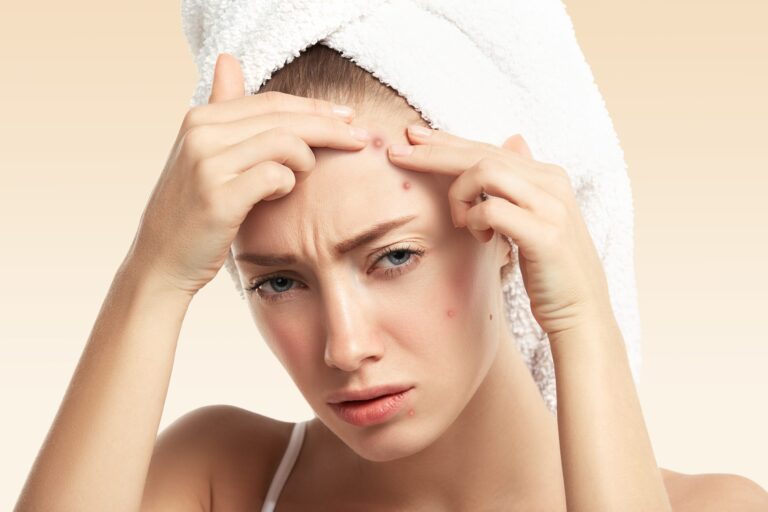Are you struggling with fungal acne? Learn what it is and how to treat it with this helpful guide. Plus, find out about the best skin clinics and treatments near you!
Are you struggling with skin issues that look like acne but are not quite? Welcome to Fungal acne, a similar yet distinct skin condition. Most people mistake it for normal pimples and opt for treating it as such. But here’s the catch – regular medications often don’t work! If this sounds familiar, relax; we have combined all our knowledge on Fungal acne and its treatments in one place.
Not only will you learn about different ways to treat Fungal acne, but also things like how to search for skin clinics near me and acne treatment near me or can I get an expert opinion at the nearest medical Spa in Phoenix, Arizona. We’ll answer all those questions, so keep reading!
What is fungal acne?
Fungal is a type of skin condition many people are unaware of. Unlike traditional acne, fungal is caused by an overgrowth of yeast that typically resides in the hair follicles. This overgrowth leads to small, itchy, and sometimes painful pustules on the skin. Some common areas where this acne may occur are the forehead, shoulders, and back. It’s important to note that fungal acne can be misdiagnosed as traditional acne, preventing proper treatment.
Fortunately, treating fungal acne involves the use of antifungal medications, as well as changes to one’s hair and skincare routine. So, if you’re struggling with persistent pimples that won’t go away, consulting a dermatologist may be worth seeing if fungal acne could be the culprit.
Signs and symptoms of fungal acne
- Small, red bumps on the skin that resemble acne
- Clusters of blemishes that can appear on the forehead, chin, and cheeks
- Bumps that are itchy or painful
- Bumps that may contain pus or fluid
- Skin that seems oily or greasy
- Skin that feels rough or bumpy to the touch
- Bumps that do not respond to acne medications, such as benzoyl peroxide or salicylic acid
- Bumps that may worsen with the use of oily or comedogenic skincare products
- Bumps that improve with the use of antifungal treatments, such as ketoconazole or tea tree oil
How to diagnose fungal acne?
Fungal, also known as pityrosporum folliculitis. Unlike traditional acne, fungal acne is caused by yeast growth on the skin’s surface. While it may look similar to regular acne, it often does not respond to traditional treatments. So how can you diagnose if your breakouts are due to this pesky fungal infection?
Look for small red or white bumps clustered around hair follicles, often on the forehead, jawline, or back. These bumps may also be itchy or feel tender to the touch. A dermatologist can easily diagnose fungal acne through a physical examination, and treatment may include antifungal medications or adjustments to your skincare routine. You can effectively diagnose and treat this stubborn skin condition by being aware of the symptoms and seeking medical attention.
Causes of fungal acne
Before diving into the detail of fungal acne treatment near me or finding skin clinics near me, it is important to understand the causes of fungus acne better to avoid the occurrence and the ways of treatment. The following are the causes of fungal acne;
- A high-sugar diet and refined carbohydrates
- Skin care products containing comedogenic ingredients or the ingredients that promote fungal growth.
- Certain medications, such as antibiotics and corticosteroids
- People with weak immune systems are also prone to fungal acne
- Oily skin
- Hormonal imbalances
- The hot and humid environment promotes the growth of fungus and yeast on the skin leading to fungal acne.
Treatment of fungal acne
This acne is a pesky condition that often goes unnoticed or misdiagnosed. It is caused by the overgrowth of yeast on the skin, mainly in areas with high moisture, such as the forehead, chest, and back. The good news is that it is treatable!
The first step is avoiding using harsh products that disrupt your skin’s natural barrier. Instead, opt for gentle, antifungal ingredients like tea tree oil, benzoyl peroxide or niacinamide. Secondly, make sure to keep the affected areas clean and dry. This means washing your face and body with a gentle cleanser and thoroughly drying with a clean towel. Lastly, if over-the-counter treatments do not work, consider seeing a dermatologist for prescription medication. With a little care and patience, treating fungal acne is doable!
Medspas specializing in skin care may also provide treatment opportunities for fungus acne, but it is important to consider that it is not the first line of defense; a few options can be regarded as after getting a consultation from an expert dermatologist or skin care specialist. These treatments are;
- Chemical peels
- Laser therapy
- Light therapy
- Microdermabrasion
While Medspa treatments can help manage fungal acne, they should always be used with a comprehensive skincare routine that includes antifungal therapies. For further information on the treatment of fungal acne, book your consultation at BeautyBorn MedSpa in Phoenix, Arizona, where timeless beauty is born!







